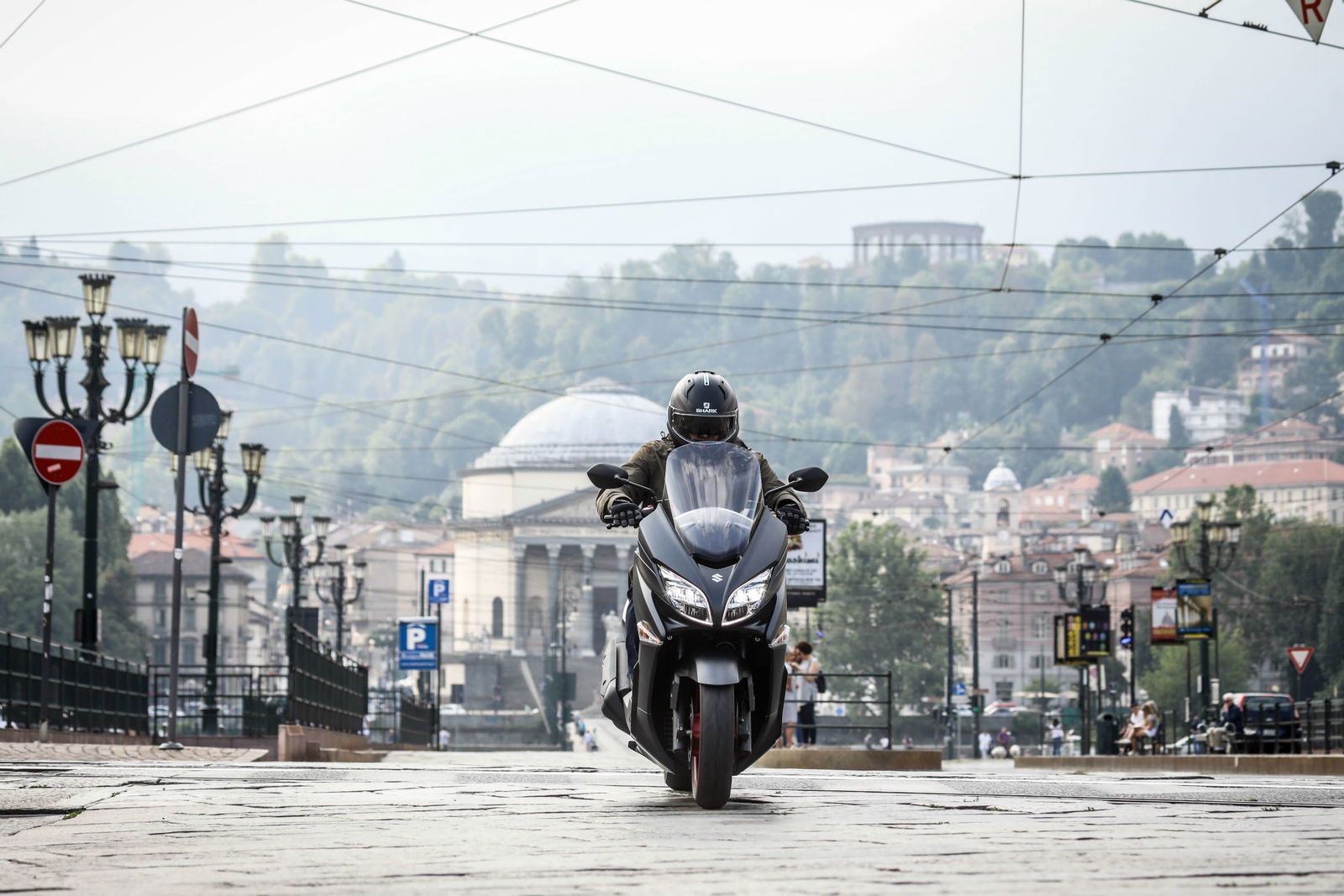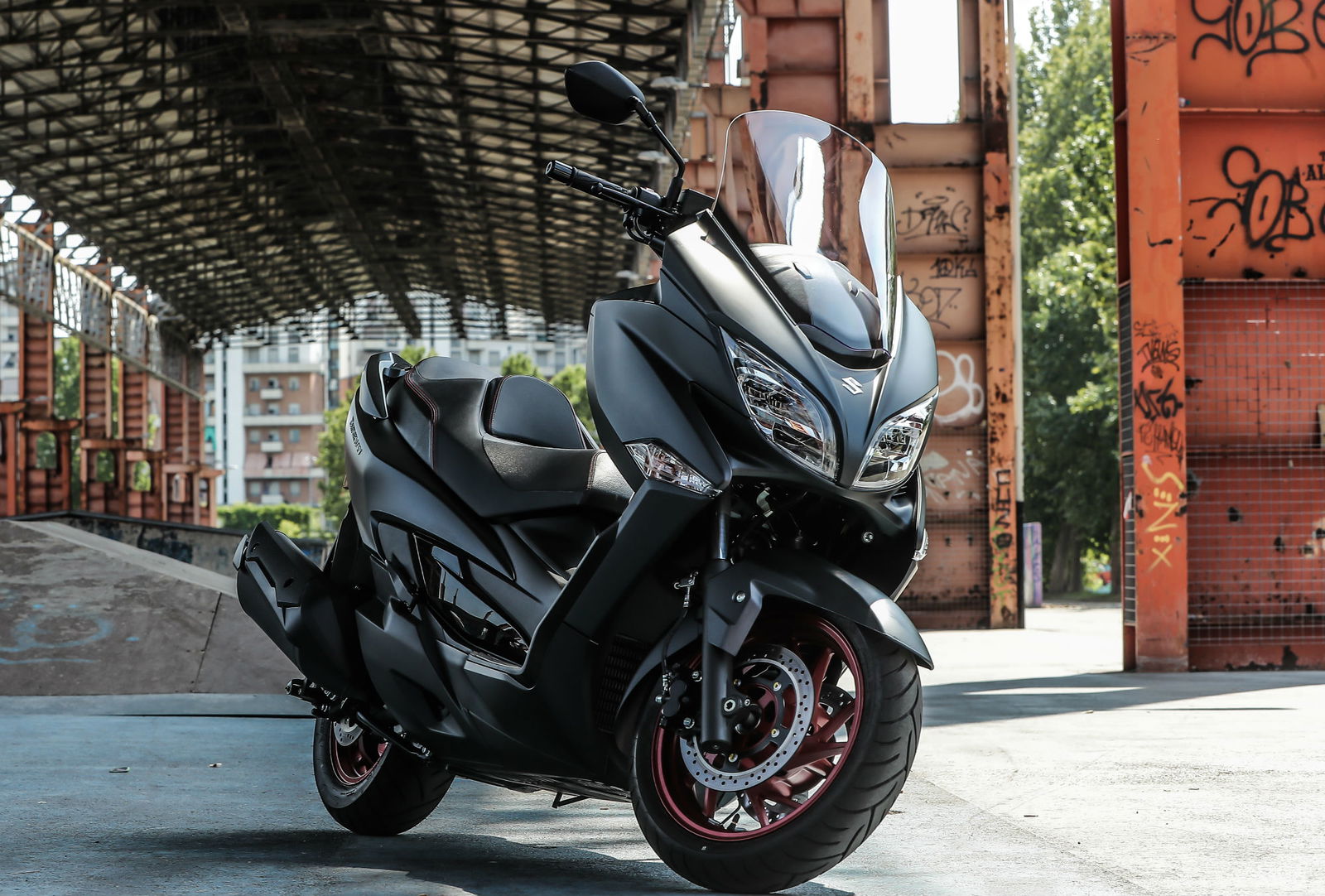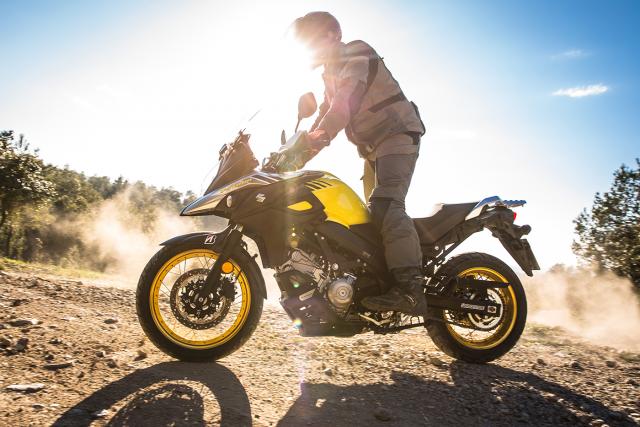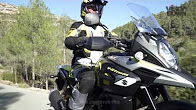First ride: Suzuki Burgman 400 review
The original maxi-scooter gets sleeker and lighter for 2017. But is it better?

By Alan Dowds
THE Old Lady is what fans call Juventus – the most famous of the two football teams in Turin. It’s a term of endearment for one of the oldest teams in the country, and the most successful Italian team in terms of trophies won.
But it’s another Old Lady we’re here in Turin today to meet – Suzuki’s Burgman 400 is the original super-scooter, launched almost 20 years ago now, in 1998. It transformed the modern scooter sector from a purely urban transport tool, into a much more capable performer, that could take on motorways and dual carriageways, giving a comfy, capacious and clean commuting option.
Back then, the biggest scoots were the rather niche 250s – Yamaha’s Majesty and Honda’s Foresight – which didn’t offer a lot more performance than the smaller machines. The 400 had a very welcome extra wad of torque and power over the 250s, with enough top-end for motorway cruising. It was very much a luxury mega-scoot though, with plenty of bodywork- and a tendency to feel a bit lardy at times. An update on 2006 gave the medium Burgman more power and kit, but she was still very much a ‘big-boned’ beastie, closer to the top guns in the sector like Honda’s Silver Wing and the 650 Burgman than the smaller 300-class machines.

But now, Suzuki’s given the 400 scoot a slimming makeover. Engineers have shaved away the bodywork, giving a sleeker rear end and narrower frontal aspect, and they’ve also trimmed the weight by a chunky seven kilos to 215kg. On the chassis front, the frame is a new, stiffer setup, and the front wheel goes up from a 14-inch rim to a 15-incher, for improved stability and a more ‘motorbike’ feel. A new dash, and revised storage spaces complete the picture of a sportier bike, and that’s confirmed by a more involved riding position, angled a little more forward than the laid-back stance on the old bike.
The changes to the engine are a bit ‘curate’s egg’ – good in parts. An overhaul was needed to meet the stiff Euro-4 emissions regs of course, so the new lump is fully compliant. It’s good to see an increase in the low-down torque; Suzuki has moved the peak figure down 200rpm, and added a couple of foot-pounds. But the downside is at the top end, where there’s been a horsepower or two lopped off. Fuel consumption is down as well though, so there’s an extra 20 miles or so in claimed maximum range, which might save you a fuel stop or two each week.

Presentation over, and we’re ready to ride. Turin is a typical Italian city – packed with beautiful architecture, great food and lovely women, but a disaster in terms of traffic most of the time. We’ve struck lucky today though: it’s a Sunday, and the first week of the Italian August break, so the place is gently bustling rather than totally bonkers. The first impressions as I chase the Suzuki test rider past old Roman facades are good – that extra dollop of low-down torque is very welcome away from the lights, and I can keep up with the V-Strom 650 ahead quite easily. The brakes are good, especially at the back, and the ABS is a welcome safety net on the ancient polished cobblestones in the old city. The Dunlop Scootsmart rubber is good, with decent feel from the front end, but there is the odd skip and slide from the back if you catch a bump or slippy patch when on the gas. Nothing horrendous, but it did make me wonder if Suzuki considered even a basic traction control setup. Yamaha was proud of the one on its X-MAX 300 launched earlier this year, and it seems like an attractive selling point for less-experienced riders, particularly for riding in wet conditions.
CLICK NEXT TO READ PAGE TWO OF OUR 2017 SUZUKI BURGMAN 400 REVIEW.
We’ve dodged the rain here in Turin though, and after a lightning fast coffee stop, it’s time to head out of town, up into the hills south of the city. I’m still chasing Stefano, the Suzuki man on his V-Strom, but it’s suddenly a bit harder to keep up. The little Burgman has plenty of handling skillz, and on the few downhill sections, you can push the front end in particular quite hard. There’s much more feel than you might expect from a scooter, the 15-inch wheel and sportier riding position paying dividends. And the suspension which was a little bit firm on the bumpier roads in town works well through longer, faster corners.
But there’s no disguising the weaker top end on the new engine – particularly when you’re trying to outdrag a V-Strom up Alpine foothills. It shows on the flat too, when we hit some faster roads. Overtaking cars sitting AT about 60-70mph takes some planning, and there’s not a lot in reserve at motorway speeds. Of course, it’s only a 400 scooter, and you can’t expect ton-up cruising performance. But if you’re considering it for an extended commute, with a chunk of British motorways to battle through, you’ll maybe be better with one of the twin-cylinder scoots and the added performance they provide.

We stop for lunch at a lovely hilltop restaurant, then it’s back in the saddle for a slightly sleepy ride back to the city. I soon wake up though, as the return roads tighten up, with some fantastic twisty sections. We’re going downhill for much of it, and the Burgman delights with the nimble front end, decent ground clearance and easy riding position. The ambient temperature readout on the new clocks is hitting 29 degrees now, and I’m having a thoroughly lovely time on the middle-Burgman as we get back into town and head for the launch hotel.
Parked up outside the (very nice) old NH hotel building, I consider the Burgman again. As regular readers might know, I have a 650 Burgman, bought and paid for with my own money and everything, so I’m well-in on the super-scoot concept in terms of practicality and usability. For getting across the South-East in comfort, at speed, while carrying plenty of stuff (and often a child on the back), it’s hard to beat. If you had to commute into the city from the suburbs or surrounding towns, even up to 30 miles away, the 400 is going to tick most of the boxes for you, despite the lack of flat-out performance. The original super scoot, the Old Lady of big-bore step-thrus, the Burgman 400 – she’s still a very capable contender indeed…

Model tested: Suzuki AN400 Burgman
Price: £6,299
Engine: 4v single, DOHC, liquid cooled, 399cc
Power: 31hp at 6,300rpm
Torque: 26.5lbft at 4,800rpm
Kerb weight: 215kg
Frame: steel tube perimeter
Suspension: front - 41mm forks / rear – Rising-rate monoshock, seven-way preload adjustable
Brakes: front - Dual 260mm discs, twin-piston calipers / Rear - 210mm disc, single-piston caliper,
Wheels & tyres: cast aluminium, with Dunlop Scootsmart, 120/70 15 (front), 150/70 13 (rear)
Fuel capacity: 13.5 litres
Seat height: 755mm

